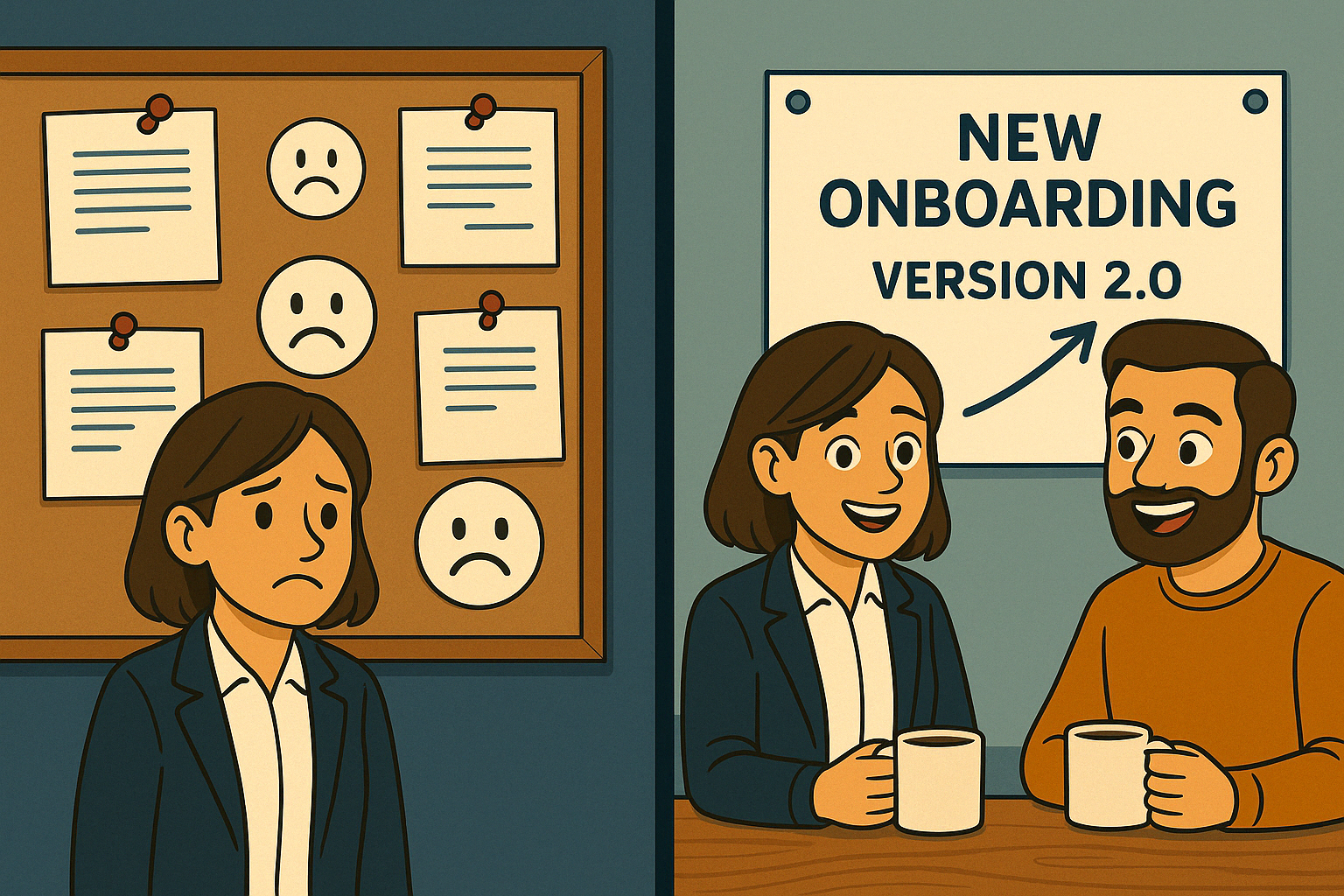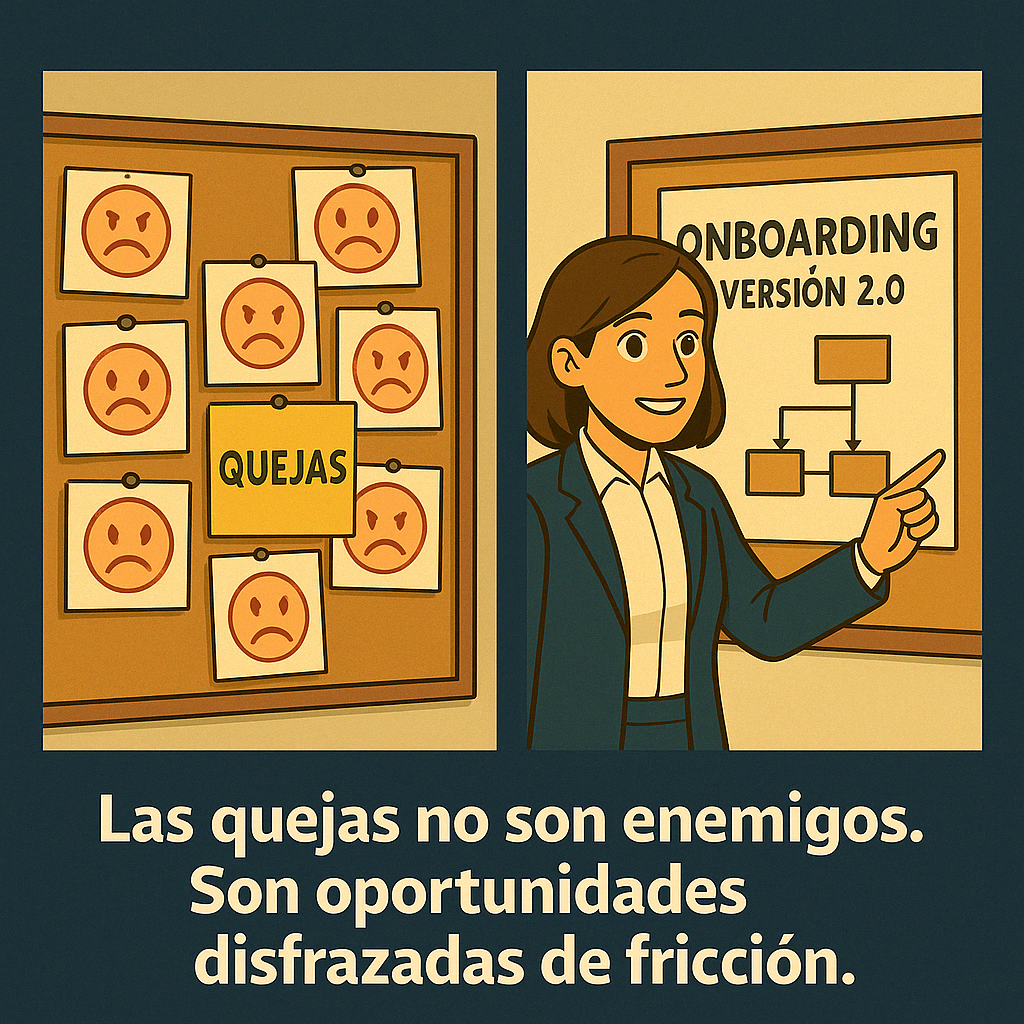
The hidden value of customer complaints
I remember clearly that first time when everything seemed perfect. No complaints, no negative comments. Everything worked “fine”… or so we wanted to believe.
But over time, I realized something crucial: silence from certain customers (internal or not) is not always a sign of success, but often a dangerous comfort zone.
I know this well because I’ve been through it.
Then came D-Day. The product was launched and, with it, the first tense emails started to arrive, followed by the first uncomfortable meetings. At first, each of those complaints felt like a personal attack, as if they were saying our work wasn’t good enough, as if the product had failed to meet expectations.
It was hard to manage. It was my first time in the spotlight, and I admit I experienced it almost like a crisis of confidence.
But one day, something changed. The email read:
“The product is powerful, but using it feels like walking blindfolded. I don’t know what to do or where to start, no matter how much time I invest.”
Instead of replying quickly, I made myself a coffee and took a deep breath. I put myself in their shoes. And that sentence, which would have broken me before, became the starting point for a huge improvement.
Thanks to that comment, we redesigned onboarding flows, redefined training sessions, created a Health Score based on real user behavior, and most importantly: we updated our roadmap with the client in mind.
That complaint became, unknowingly, the beginning of our evolution as a team.
Since then, I’ve learned that complaints are not enemies. They’re opportunities disguised as friction.
📋Real complaints and how we solved them:
📍Example 1: When a complaint improves your product.
A client demanded refinements for a product with a steep internal learning curve. The complaint wasn’t about a technical error—it was about how they could integrate it into their company.
We improved how we presented data. By enabling real-time data exports, they were able to take action to reduce churn in their own clients. They gained a complete visual snapshot and could segment incoming data for their call center to act on critical cases.
📍Example 2: The “No” that helped us grow
Another institution reached out saying the system was too complex for simple tasks. What sounded like destructive criticism was actually the key to developing a simplified interface for non-technical users—something anyone could use in just a few minutes.
We didn’t do it to convince them to renew. We did it because they were right. And when we showed them the new feature… they recommended us to other departments!
🔍 The benefits of well-managed complaints:
- Increased retention.
- Lower support costs.
- Improved product adoption and higher NPS.
- Stronger relationships.
How do you know a complaint was worth it? When, in addition to all the above, the client personally thanks you. Because not everything can be measured on a dashboard.
🏁 Where to start when everything feels like too much?
Let me be honest: when everything feels urgent, nothing really is. I’ve been there. That’s why, when I want to start transforming feedback into action, I follow this rule:
-
Create a system for active listening. Choose a recurring complaint—not the loudest one, but the most consistent.
-
Create a process, even a simple one, and prioritize with a framework: Use the RICE matrix (Reach, Impact, Confidence, Effort). I also recently came across a brilliant idea I’m eager to try: “Changes born from you.” What if we give voice to those constant complaints and send a thank-you email to the people involved? That strategy fosters transparency, more feedback, and higher engagement.
-
Close the loop. Follow up: Beyond communication, call your client and explain what was done thanks to their feedback. Ask for their thoughts after using the new solution.
-
Create a ritual: Make it a habit. Don’t let the initiative die—review it monthly or quarterly with your team.
⚠️ Lessons I’ve learned (sometimes the hard way)
I could say I’ve always handled complaints well, but I’d be lying. It’s been a journey, one I’ve struggled through, grown from, and continue to learn.
Here are a few lessons I now apply with care (and a few scars):
❌ Waiting to receive “many complaints” before acting. A single one can be a sign of a deeper issue.
❌ Replying quickly but not deeply. Urgency can make us shallow. The client doesn’t want a copy-paste reply—they want to be heard, understood, and feel that someone is truly there for them.
❌ Failing to share with other teams. A complaint can be the clue Product needs—but if it stays in Support, it gets lost.
❌ Thinking gratitude isn’t necessary. Now, whenever a client gives feedback—even tough feedback—I thank them like they’ve gifted me their time. Because that’s exactly what they’ve done.
✅ Conclusion

Because when a customer complains, they’re not saying they want to leave. They’re saying: “I still care.”
💡 Because a culture of feedback isn’t just about surveys—it’s about real conversations, visible improvements, celebrating progress… and saying thank you, humbly.
✨ And you? What’s the last thing you improved thanks to a complaint?
👉🏽 I’m gathering real stories for an upcoming piece on The Customer Success Lab, and I’d love to include yours.
📩 Reach out 😉